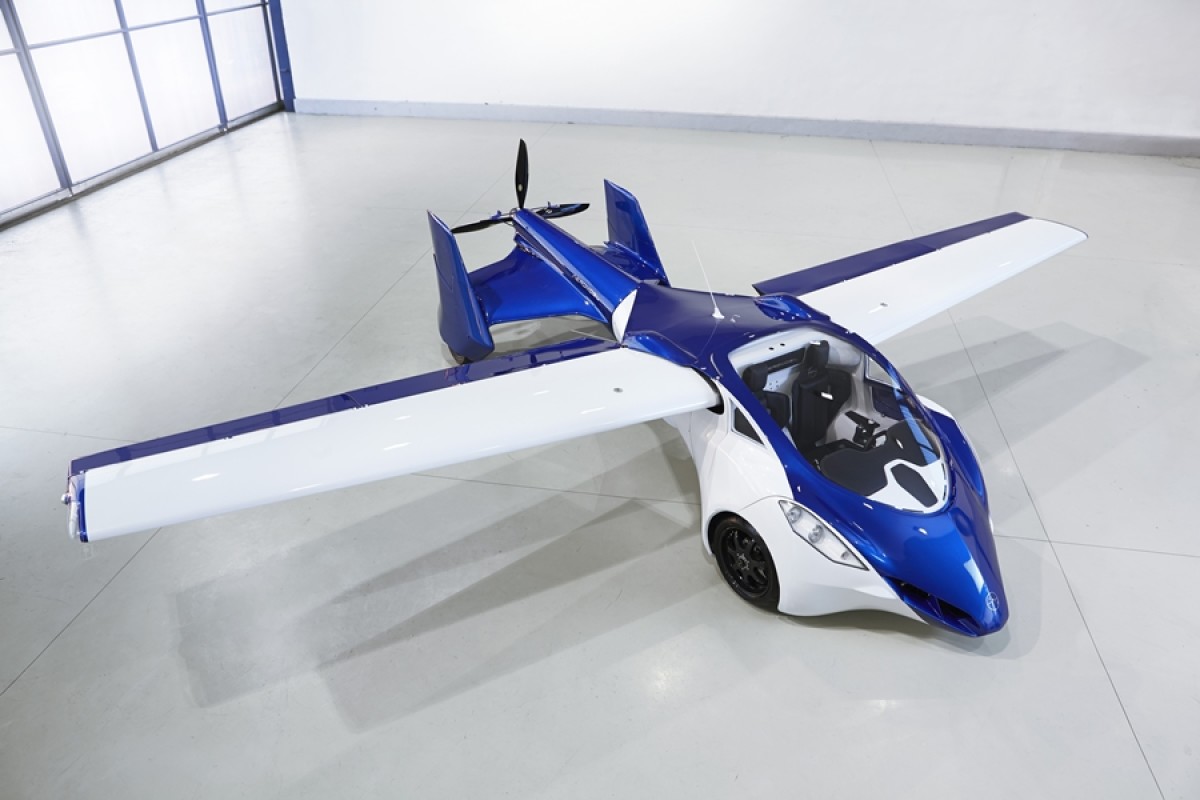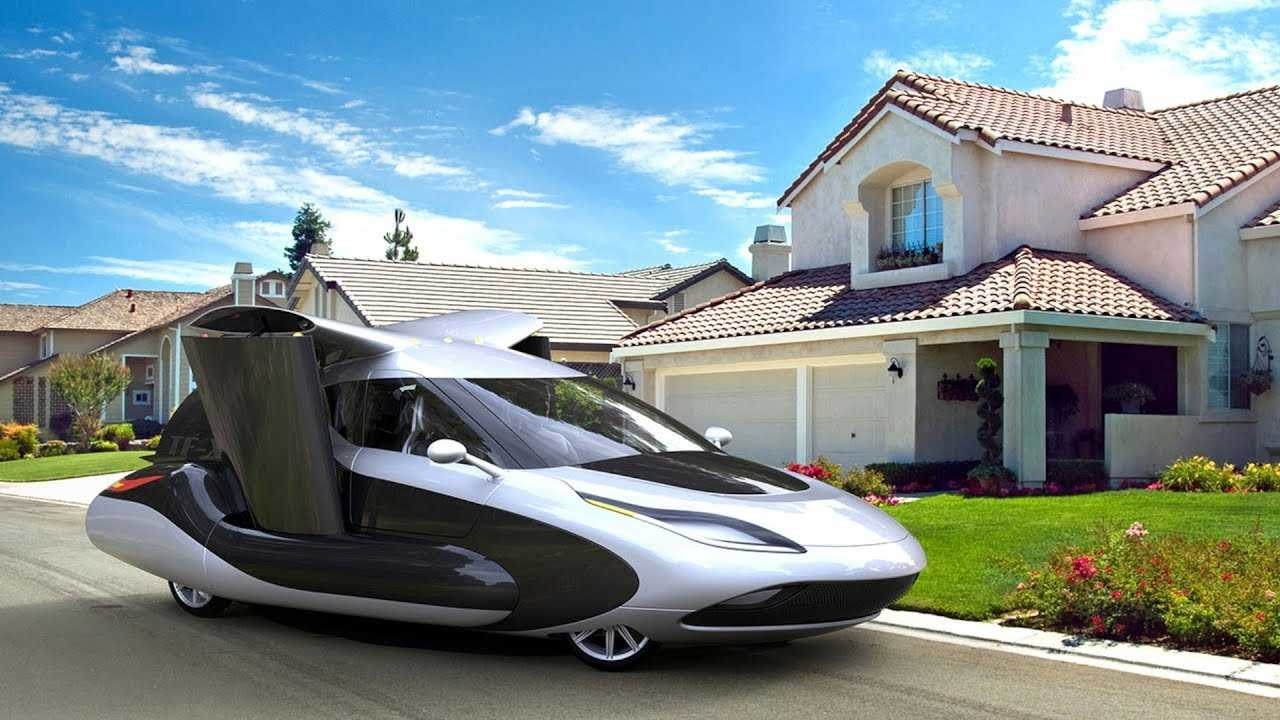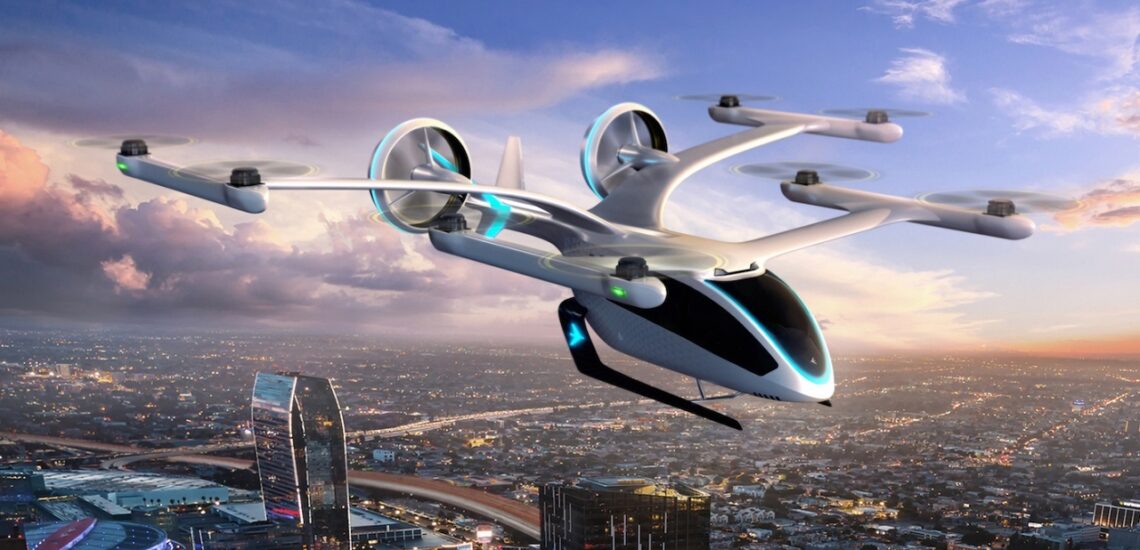Según la definición, eVTOL es un avión eléctrico que se distingue por la electrificación, el control automatizado y la posibilidad de despegue y aterrizaje verticales. Debido a su eficiencia, silencio y al hecho de que un pequeño “parche” de tierra es suficiente para el despegue y aterrizaje vertical, las naves eVTOL pueden hacer de los vuelos una forma común de movimiento de los terrícolas en el espacio. El mercado de tales vehículos “podría ser una adición de ultra-nicho a la infraestructura de transporte ya existente”, dijo Rajeev Lalwani, analista senior de Morgan Stanley que se especializa en aviación y construcción de aviones. Veamos si el proyecto de la máquina eVTOL es tan prometedor como está posicionado y en qué se basa el potencial de este concepto.
Ventajas y problemas del concepto eVTOL
A diferencia de los aviones y helicópteros, la característica única de los vehículos eVTOL es que permiten a las personas viajar rápidamente de un punto a otro. Los expertos comparan la exageración que rodea a los autos voladores eVTOL con la época en que nació la industria aeronáutica gracias a los hermanos Wright, y la industria del automóvil comenzó con el Modelo Ford. La gente puede deshacerse de la molestia de los aeropuertos y los atascos de tráfico en la carretera, así como del costo de contratar pilotos, ellos mismos podrían volar autos con alas.
El tamaño de las baterías, el control del tráfico aéreo de “vehículos voladores” y otros problemas de infraestructura se encuentran entre los muchos desafíos potenciales en la comercialización de este transporte aéreo del futuro.
“Van a pasar muchas cosas”, dijo Sanjiv Singh, profesor del Instituto de Robótica de la Universidad Carnegie Mellon, quien cofundó Near Earth Autonomy, una empresa que también trabaja en la máquina voladora eVTOL.
“Si los “coches voladores” cuestan $10 millones, nadie los comprará. Si vuelan durante cinco minutos, nadie los comprará. Si caen del cielo de vez en cuando, nadie los comprará tampoco”, dijo el profesor Singh en una entrevista.
Lilium de Alemania, Joby Aviation de California y Wisk, una empresa conjunta entre Boeing Co. y Kitty Hawk Corp., también están trabajando en proyectos eVTOL.
Sebastian Thrun, director ejecutivo de Kitty Hawk, dijo que los aviones, los teléfonos móviles y los autos autónomos tardaron tiempo en ganar reconocimiento. “Pero para los automóviles con eVTOL, el lapso de tiempo entre la tecnología y la adopción social puede ser más rápido y más corto”, dijo S. Thrun.
El sueño de la gente de volar por el cielo en coche, tan fácil como conducir por la autopista, casi se ha hecho realidad en Japón.
A finales de agosto de 2020, el artefacto eVTOL, que parece una elegante motocicleta con hélices, se elevó varios metros (1-2 metros) sobre el suelo y flotó en un área protegida durante cuatro minutos. SkyDrive Inc., el desarrollador líder mundial de soluciones de movilidad aérea urbana, ha anunciado oficialmente un vuelo de demostración pública de su nuevo modelo de coche volador SD-03. Esta resultó ser la primera demostración pública de un transporte volador: eVTOL en Japón. SkyDrive confía en que para 2050, todos los residentes o huéspedes de Tokio podrán viajar fácilmente en avión entre 23 municipios de la capital japonesa en solo diez minutos. Además, los coches voladores se utilizarán activamente para transportar personas en zonas montañosas y en islas remotas, así como para la evacuación en caso de desastres naturales u otras situaciones imprevistas.

Según un estudio de Morgan Stanley, el segmento de transporte eléctrico con despegue y aterrizaje vertical eVTOL tiene un enorme potencial. Aproximadamente para 2040, la demanda mundial puede alcanzar los 1,5 billones de dólares.
Desarrollos del avión esloveno Pipistrel Aircraft
Pipistrelen Eslovenia es uno de los múltiples fabricantes interesados en los planes de Uber de construir una red de aviones eléctricos compactos en ciudades de todo el mundo. Pipistrel presentó su concepto eVTOL, que puede convertirse en una realidad en unos años. El concepto de avión está equipado con sistemas de potencia especiales para el despegue y aterrizaje vertical, así como el vuelo en sí. Puede transportar de dos a seis pasajeros y cumple totalmente con el concepto eVTOL: se trata de aviones con despegue y aterrizaje verticales, equipados con propulsión eléctrica. Son más silenciosos, más seguros, más ecológicos y más asequibles que los helicópteros.
El nuevo Pipistrel eVTOL, desarrollado como socio del programa UBER Elevate, volará distancias más largas y a velocidades más altas que los modelos anteriores. El avión eléctrico fue diseñado usando un nuevo sistema integrado de despegue vertical para reducir costos, pero varios expertos dicen que esto requiere habilidades de piloto avanzadas.
Ivo Boscarol, fundador y CEO de Pipistrel, declaró lo siguiente: “Pipistrel no está intentando reinventar un helicóptero añadiendo nuevos motores. En cambio, ofrecemos soluciones especiales de despegue vertical con escalabilidad incorporada para aviones con capacidad de dos a seis personas La combinación de un innovador sistema integrado de despegue vertical silencioso y más eficiente con el alto rendimiento de las alas aerodinámicas en la nueva clase eVTOL reducirá el costo de operación, lo que servirá como una clara ventaja para los pasajeros de UBER Elevate”.

Mark Moore, director técnico de UBER Elevate Vehicle Systems, enfatizó que “Pipistrel fue uno de los pioneros en el desarrollo de aviones eléctricos, que comenzó a trabajar para aumentar la duración de vuelo de aviones con motores eléctricos. Como socio de Uber Elevate, Pipistrel’s El concepto de eVTOL los acerca a la creación de una nueva generación de aviones con tracción eléctrica distribuida. Estamos muy contentos de continuar nuestro trabajo con Pipistrel y estaremos encantados de ofrecer este concepto de red Elevate”.

AeroMobil 3.0 de la empresa AeroMobil eslovaca
Slovaks creó su propia producción de autos voladores (aeromóviles). Estos vehículos están adaptados para una conducción y un vuelo cómodos. Inmediatamente antes del despegue, las alas del Airmobil salen por los lados. El vehículo en sí usa gasolina regular como combustible y tiene una cabina diseñada para dos: un piloto y un pasajero. Quizás en el futuro estará equipado con un piloto automático. Todavía no se habla de que el despegue de Aeromobil se haga directamente desde la autopista, por a hora tendrán que utilizar la pista del aeródromo más cercano. En consecuencia, todavía no se puede prescindir de una licencia de piloto. Sin embargo, este vehículo tiene un excelente rendimiento de vuelo, lo que se vio facilitado en gran medida por materiales compuestos especialmente seleccionados para el cuerpo del fuselaje. Aeromobil puede viajar hasta 700 km sin retanquear gasolina a una velocidad de casi 200 km/h en el aire. Su coste aún no se compara con el habitual coche de producción en serie, aunque se equipara al precio de un coche deportivo y un avión ligero.

Prospectos para el Terrafugia estadounidense
El Terrafugia TF-X se posiciona como el primer automóvil volador híbrido semiautónomo del mundo que es de tamaño compacto y cabe en cualquier garaje. Esta nave está diseñada para cuatro personas, tiene la capacidad de despegar verticalmente y puede moverse tanto en el aire como en el suelo. Sin recargar o reabastecer el combustible, el TF-X puede viajar 800 km, porque las hélices que elevan el automóvil en el aire están impulsadas por motores eléctricos, y la hélice de empuje que proporciona el movimiento hacia adelante es impulsada por una turbina de gas.
Es importante que el piloto TF-X prácticamente no necesite el uso de habilidades profesionales, ya que todo a bordo del avión-automóvil está controlado por una computadora. Solo necesitas establecer el destino. El sistema informático TF-X también:
- Calcula la cantidad óptima de energía/combustible;
- Evalúa las condiciones climáticas y las características del terreno del área sobrevolada o pasada;
- Mira y supera varios obstáculos;
- Puede aterrizar la nave de forma independiente en situaciones de emergencia;
- También puede informar de lo que sucede a bordo a los controladores de tráfico aéreo.

Si una determinada situación anormal en el espacio aéreo no permite el aterrizaje del avión-automóvil TF-X o es posible un aterrizaje forzoso, la computadora ofrecerá a las personas a bordo utilizar los sistemas de paracaídas incluidos en la configuración básica del TF-X arte.
El principal problema es el alto costo del Terrafugia TF-X, que hace que dicho vehículo sea inaccesible para el consumidor masivo. Pero este automóvil-avión también es bastante asequible para aquellos que pueden pagar un automóvil premium. Su precio ronda los $300 mil dólares. Sin embargo, el resto de los interesados pueden pensar en adquirir Terrafugia Transition. Este automóvil de dos asientos se convierte en un automóvil aéreo en menos de un minuto. El Terrafugia Transition está certificado como medio de transporte en la vía pública y como “avión deportivo ligero”. La velocidad que alcanza el coche en vuelo puede ser de 185 km/h, mientras que la autonomía de vuelo es de 790 km. La gasolina se utiliza como combustible. Desafortunadamente, al mismo tiempo, el Terrafugia Transition no tiene un despegue vertical, como el hermano más caro Terrafugia TF-X, y para volar con seguridad en el aire, necesita una franja plana de casi medio kilómetro de largo.
La creación de “reglas de tráfico aéreo” para una clase especial de transporte en forma de automóviles voladores (aerocars) requerirá sin duda una licencia. Y si aún no tienes un automóvil volador, obtener una licencia de conducir internacional es una buena idea. Quién sabe con qué rapidez entrarán los coches aéreos en nuestra vida diaria, pero la ventaja de obtener una licencia de piloto será para quienes ya tienen derecho a conducir un coche en tierra. Nuestro sitio web brinda este servicio: tramitar la licencia de conducir internacional es muy sencillo, sólo necesitas hacer la solicitud.


Publicado Diciembre 10, 2020 • 11m para leer






